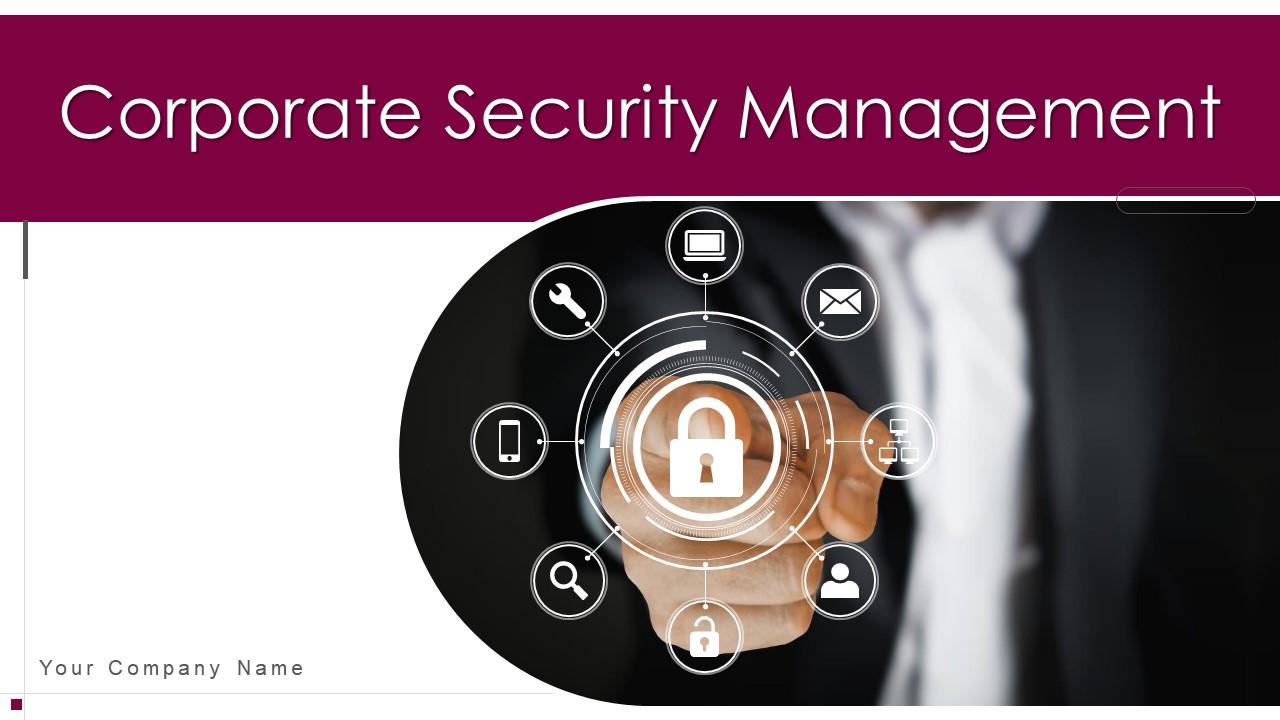A Plan for Corporate Security Quality: Securing Your Venture
Wiki Article
From Cybersecurity to Physical Actions: Enhancing Company Protection in a Changing Globe
In today's quickly advancing electronic landscape, the significance of business security can not be overstated. As cyber dangers become progressively sophisticated and common, companies need to surpass typical cybersecurity steps to protect their operations and assets - corporate security. This is where the combination of physical safety measures ends up being crucial. By integrating the toughness of both cybersecurity and physical safety and security, business can develop a detailed protection technique that addresses the diverse variety of risks they face. In this discussion, we will certainly discover the altering hazard landscape, the need to incorporate cybersecurity and physical protection, the implementation of multi-factor verification procedures, the importance of employee understanding and training, and the adjustment of security steps for remote workforces. By analyzing these vital areas, we will obtain useful understandings into how organizations can enhance their company safety in an ever-changing world.Understanding the Transforming Hazard Landscape
The evolving nature of the contemporary globe necessitates a thorough understanding of the transforming danger landscape for reliable corporate safety and security. It is crucial for companies to stay educated and adjust their safety and security gauges to attend to these evolving risks.One key facet of comprehending the altering risk landscape is identifying the various kinds of hazards that companies encounter. Furthermore, physical hazards such as theft, vandalism, and corporate espionage remain prevalent issues for companies.
Tracking and assessing the danger landscape is necessary in order to recognize possible risks and susceptabilities. This entails staying updated on the latest cybersecurity trends, examining risk knowledge records, and conducting routine threat assessments. By recognizing the altering threat landscape, companies can proactively implement appropriate security actions to mitigate dangers and shield their possessions, reputation, and stakeholders.
Integrating Cybersecurity and Physical Protection
Incorporating cybersecurity and physical safety is critical for thorough corporate defense in today's digital and interconnected landscape. As organizations significantly rely upon modern technology and interconnected systems, the boundaries in between physical and cyber dangers are becoming blurred. To efficiently protect against these threats, an alternative strategy that incorporates both cybersecurity and physical security measures is necessary.Cybersecurity concentrates on safeguarding electronic assets, such as information, networks, and systems, from unauthorized gain access to, interruption, and burglary. Physical safety and security, on the various other hand, incorporates actions to secure physical assets, people, and centers from risks and vulnerabilities. By integrating these two domain names, organizations can address susceptabilities and dangers from both digital and physical angles, consequently boosting their general security position.
The integration of these two self-controls enables a much more detailed understanding of safety threats and enables a unified action to incidents. For instance, physical gain access to controls can be enhanced by integrating them with cybersecurity protocols, such as two-factor authentication or biometric recognition. Similarly, cybersecurity measures can be complemented by physical safety measures, such as surveillance electronic cameras, alarms, and safe and secure access factors.

Implementing Multi-Factor Verification Procedures
As organizations significantly focus on extensive safety and security steps, one reliable method is the official source implementation of multi-factor verification steps. Multi-factor verification (MFA) is a protection technique that calls for customers to supply several types of recognition to access a system or application. This technique adds an added layer of security by integrating something the user understands, such as a password, with something they have, like a fingerprint or a safety token.By executing MFA, companies can dramatically enhance their security stance - corporate security. Traditional password-based authentication has its limitations, as passwords can be quickly compromised or failed to remember. MFA minimizes these risks by adding an added authentication element, making it a lot more difficult for unapproved individuals to get to delicate info
There are numerous sorts of multi-factor verification methods available, including biometric verification, SMS-based verification codes, and equipment tokens. Organizations need to analyze their particular requirements and choose one of the most suitable MFA service for their needs.
However, the execution of MFA need to be meticulously intended and executed. It is essential to strike a balance between protection and use to avoid customer disappointment and resistance. Organizations must also think about potential compatibility issues and supply appropriate training and assistance to make sure a smooth change.
Enhancing Worker Recognition and Training
To reinforce company security, organizations need to focus on boosting employee awareness and training. Several safety violations take place due to human mistake or basics absence of understanding.Reliable worker recognition and training programs need to cover a variety of topics, including data security, phishing attacks, social design, password hygiene, and physical security actions. These programs need to be customized to the specific demands and responsibilities of various staff member roles within the organization. Routine training simulations, workshops, and sessions can aid workers create the necessary abilities and expertise to respond and determine to safety and security hazards successfully.
Moreover, companies need to encourage a society of protection recognition and supply recurring updates and reminders to maintain employees educated concerning the most recent threats and reduction methods. This can be done via interior interaction networks, such as e-newsletters, intranet sites, and email projects. By promoting a security-conscious labor force, organizations can substantially lower the chance of security occurrences and protect their valuable assets from unapproved access or concession.

Adapting Safety And Security Actions for Remote Labor Force
Adjusting business safety actions to accommodate a remote labor force is essential in ensuring the security of delicate details and properties (corporate security). With the enhancing trend of remote job, companies should implement proper security actions to mitigate the dangers connected with this new way of functioningOne important facet of adjusting safety and security procedures for remote work is establishing safe communication channels. Encrypted messaging platforms and online exclusive networks (VPNs) can help secure sensitive information and avoid unauthorized accessibility. Furthermore, companies should apply making use of solid passwords and multi-factor authentication to enhance the i was reading this security of remote gain access to.
One more vital consideration is the execution of safe remote access options. This includes supplying employees with secure access to business sources and information via digital desktop computer framework (VDI), remote desktop methods (RDP), or cloud-based services. These innovations ensure that delicate information continues to be protected while making it possible for employees to perform their functions effectively.

Lastly, extensive safety and security recognition training is critical for remote workers. Educating sessions should cover finest techniques for firmly accessing and handling delicate details, identifying and reporting phishing efforts, and maintaining the general cybersecurity hygiene.
Conclusion
In final thought, as the danger landscape continues to evolve, it is important for organizations to enhance their protection gauges both in the cyber and physical domains. Incorporating cybersecurity and physical protection, carrying out multi-factor verification procedures, and boosting worker understanding and training are crucial steps towards achieving durable corporate safety.In this conversation, we will certainly check out the changing threat landscape, the need to incorporate cybersecurity and physical safety, the implementation of multi-factor verification actions, the value of staff member awareness and training, and the adaptation of safety and security actions for remote workforces. Cybersecurity actions can be matched by physical protection steps, such as security cams, alarm systems, and protected accessibility points.
As companies significantly prioritize thorough protection actions, one effective technique is the execution of multi-factor authentication procedures.In verdict, as the risk landscape proceeds to advance, it is essential for companies to reinforce their safety and security determines both in the cyber and physical domain names. Integrating cybersecurity and physical safety and security, carrying out multi-factor verification measures, and enhancing worker recognition and training are essential steps towards attaining durable corporate security.
Report this wiki page